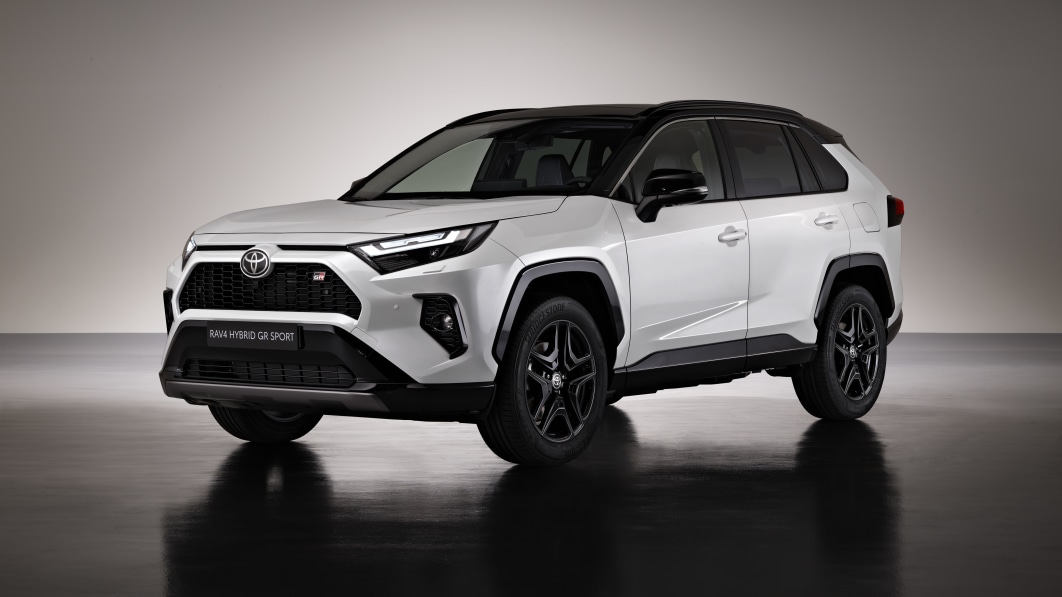Fuel efficiency is one of the most significant factors buyers consider when shopping for a new SUV. Whether it’s a compact crossover or a full-size utility vehicle, the promise of high miles per gallon (MPG) often sways consumer decisions. But as any seasoned driver knows, the sticker MPG isn’t always a long-term guarantee.
Over time, real-world efficiency can fluctuate due to aging engines, degraded components, poor maintenance, and sometimes even design flaws. Some SUVs manage to stay remarkably close to their original fuel economy figures, even after 100,000 miles, while others turn into gas guzzlers as the years go by.
Understanding which SUVs hold up in the fuel-efficiency department is especially important today. As gas prices fluctuate and environmental concerns grow, long-term fuel economy becomes more than just a budgeting issue—it’s a lifestyle decision.
People expect their vehicles to maintain reasonable efficiency even as they age, especially those who plan to hold onto them for a decade or more. The resale value of a car is also deeply affected by its fuel performance, making long-term MPG a financial factor beyond just savings at the pump.
In this article, we’ll look at ten SUVs—five that are known to maintain high fuel economy over the years and five that have a reputation for degrading efficiency. This list is not based on momentary glitches or isolated bad batches but instead focuses on consistent patterns observed across model years.
While driving habits, maintenance, and geography play a role, some models are simply better engineered for long-term efficiency. Likewise, some fail to live up to their initial EPA ratings once they’ve clocked in substantial mileage.
Whether you’re looking for your next reliable SUV or want to avoid a future fuel guzzler, this comprehensive look should help steer you in the right direction.
Also Read: 10 Best Synthetic Oils for Engine Longevity and Peak Performance
5 SUVs That Maintain High MPG Over Time
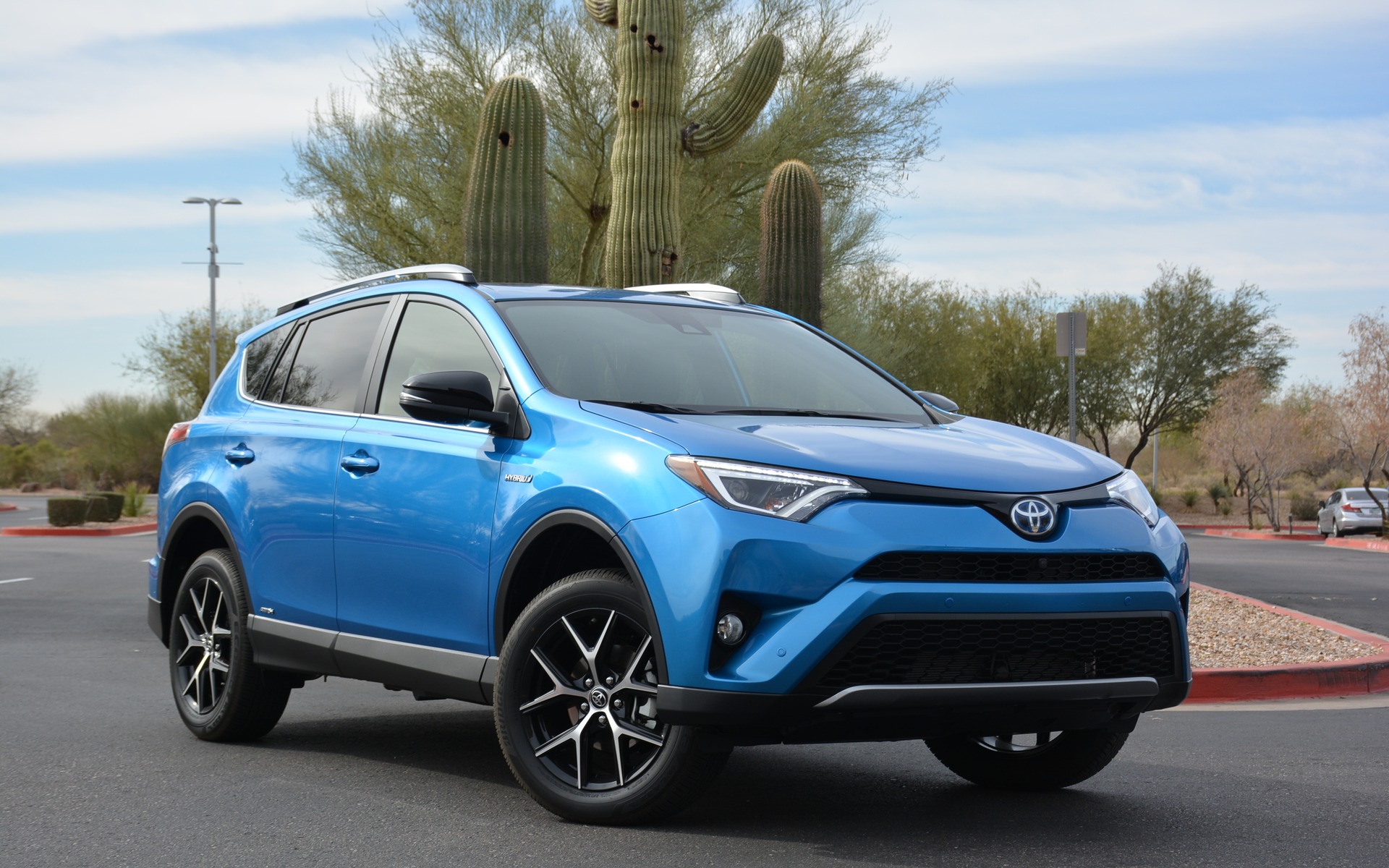
1. Toyota RAV4 Hybrid
The Toyota RAV4 Hybrid is a long-standing champion in the fuel economy game, and what makes it stand out even more is how well it retains efficiency over time. Thanks to Toyota’s tried-and-true hybrid system, the RAV4 Hybrid often performs close to its EPA-estimated 40 MPG even after years on the road.
The electric motor doesn’t suffer the same level of mechanical degradation as a gas engine, and regenerative braking means less wear on the actual brakes. Together, these components ensure consistent fuel savings for the life of the vehicle.
Toyota’s hybrid technology has also proven incredibly resilient in high-mileage scenarios. Owners frequently report reaching 150,000 miles or more without any significant dip in performance or fuel economy.
The battery pack in particular, which can be a weak spot for hybrids, holds up well in the RAV4 due to efficient thermal management and solid construction. Toyota’s reputation for reliability further supports this durability, giving drivers peace of mind over the long haul.
Additionally, the vehicle’s weight distribution, aerodynamics, and electronic throttle control contribute to maintaining its fuel performance.
Unlike some hybrids that suffer from fluctuating mileage in extreme temperatures or high elevations, the RAV4 Hybrid delivers stable results across various environments. Whether in the city or on long highway drives, this SUV continues to impress with its resilience in delivering top-tier fuel efficiency.
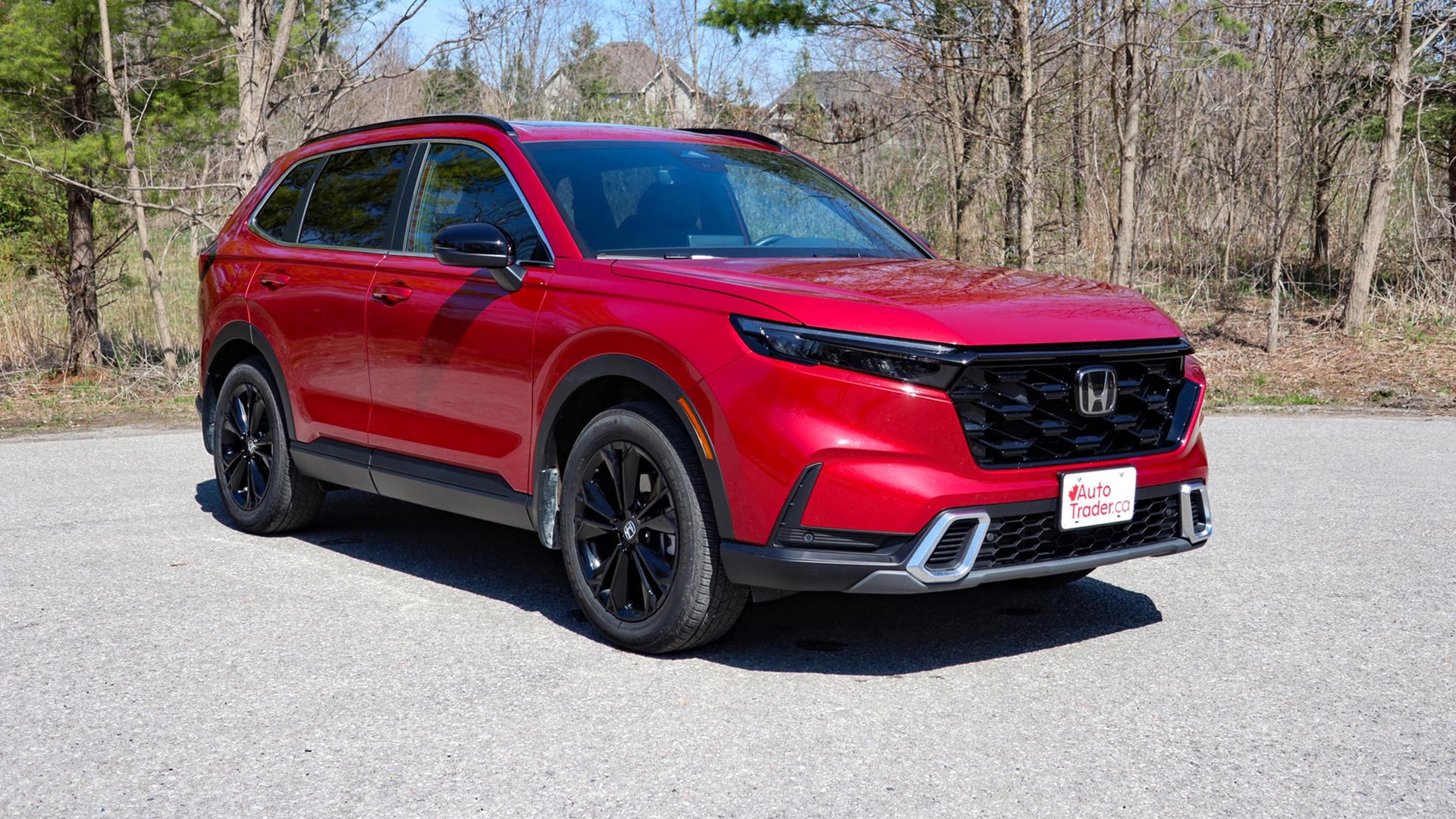
2. Honda CR-V Hybrid
The Honda CR-V Hybrid is another compact SUV that shows remarkable fuel efficiency retention. With an initial EPA rating around 38 MPG combined, it consistently delivers in real-world tests, even after crossing the 100,000-mile mark.
Honda’s two-motor hybrid system, which can switch between EV drive, hybrid drive, and engine drive, offers flexibility that helps keep the engine from overworking. This means components experience less strain and wear, helping retain good mileage.
One of the main reasons the CR-V Hybrid maintains high MPG is Honda’s philosophy of balancing power and efficiency. The car doesn’t lean too heavily on the gas engine, allowing it to take breaks and run on battery when cruising or stuck in traffic. Over time, this leads to less wear on the engine and better long-term performance.
Moreover, Honda’s engine components and CVT (continuously variable transmission) have a reputation for longevity and minimal fuel loss over time.
From a maintenance perspective, the CR-V Hybrid is relatively easy and affordable to keep in good shape, which directly affects MPG. Clean filters, healthy tires, and timely oil changes ensure that the vehicle performs efficiently.
Unlike some competitors, the CR-V doesn’t suffer from hidden energy drains like heavy AWD systems or inefficient climate control, making it a smart pick for longevity and mileage.
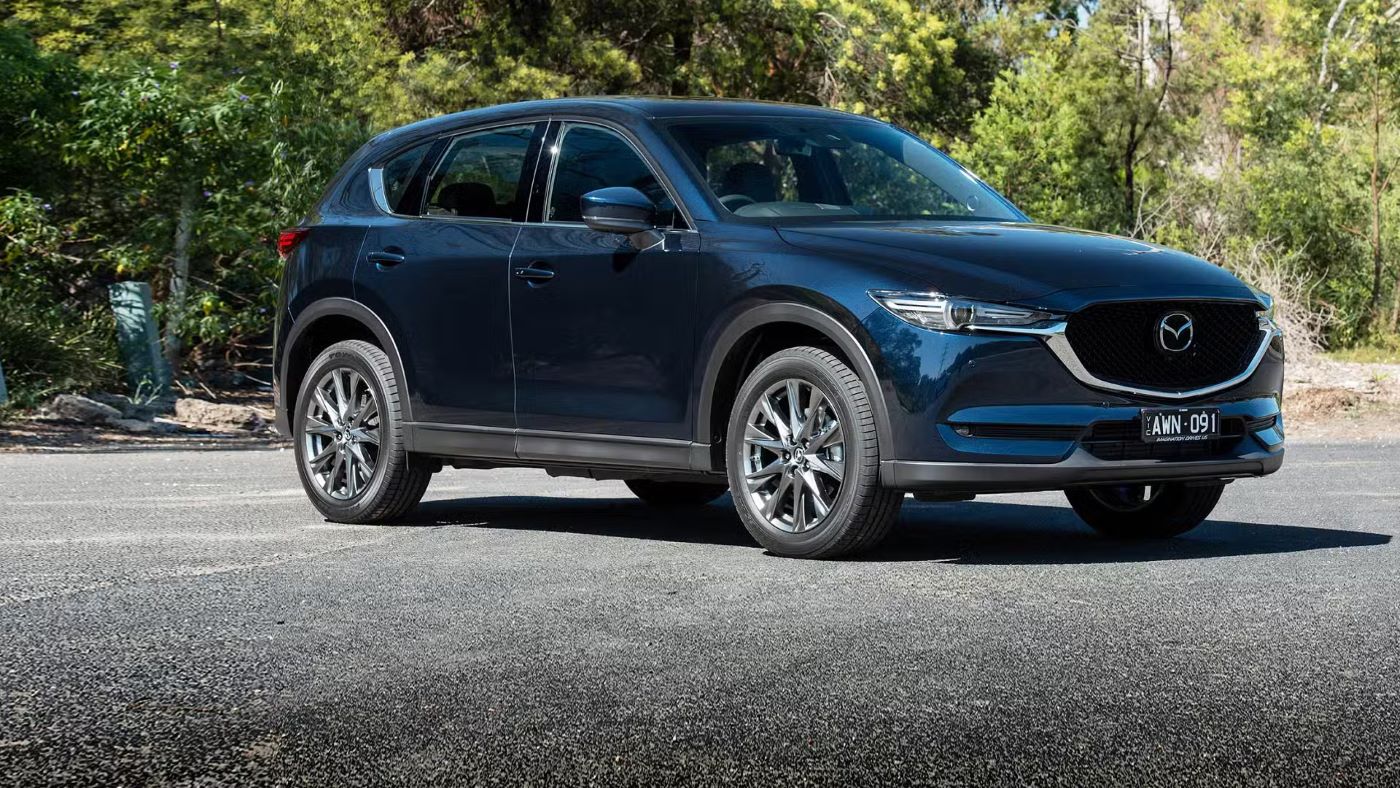
3. Mazda CX-5 (Non-Turbo)
The naturally aspirated version of the Mazda CX-5 (i.e., without the turbo engine) is well-known for delivering reliable fuel efficiency over the years. Rated at about 28-30 MPG combined, it remains consistent as long as regular maintenance is observed.
One of the key contributors to this consistency is Mazda’s Skyactiv technology, which optimizes engine compression, weight reduction, and gear ratios for maximum performance without unnecessary fuel use.
Unlike some SUVs that rely on turbocharging to boost fuel economy, the CX-5 takes a more traditional and reliable route. Turbocharged engines can deliver great MPG initially, but often degrade faster due to higher internal temperatures and added strain.
The CX-5’s engine is designed to operate efficiently with minimal stress, which leads to long-term durability and stable gas mileage. Users often report seeing very little change in fuel economy even after five to seven years of ownership.
Another advantage lies in Mazda’s focus on driver feedback and responsiveness. The smoother the car drives, the easier it is to maintain efficient habits, such as gentle acceleration and timely gear shifts.
Mazda’s engineering keeps the vehicle nimble without being overly aggressive, allowing drivers to naturally conserve fuel without sacrificing the driving experience.
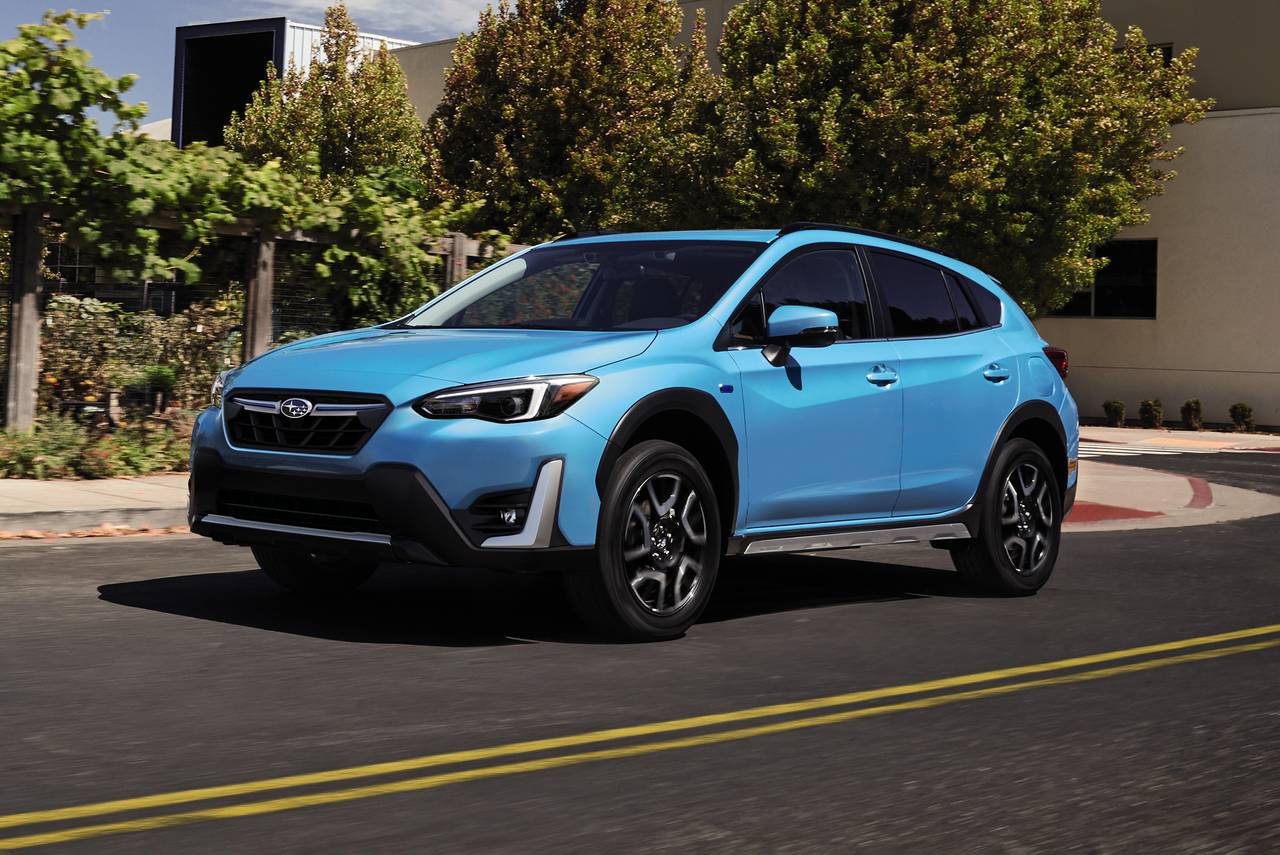
4. Subaru Crosstrek Hybrid
The Subaru Crosstrek Hybrid may not be the flashiest SUV on the market, but it’s a sleeper hit for people looking for long-term efficiency.
This plug-in hybrid starts off with decent MPG figures (90 MPGe and about 35 MPG combined in hybrid mode), and its ability to switch between electric and gas propulsion means less stress on the internal combustion engine. Over time, this results in slower wear and better fuel consistency.
One standout feature of the Crosstrek Hybrid is its use of Subaru’s symmetrical all-wheel-drive system, which operates efficiently without dramatically affecting fuel economy.
In many SUVs, AWD systems are fuel economy killers, especially as they age. Subaru, however, has managed to fine-tune its system to distribute power effectively and minimize loss. This helps the vehicle retain its fuel efficiency regardless of weather or terrain.
Moreover, Subaru’s commitment to reliability and safety goes hand in hand with fuel performance. The engine and battery management systems are built to last, and most owners who perform regular maintenance report minimal efficiency drop-off even after substantial mileage.
If you’re looking for a hybrid SUV with off-road chops and strong long-term MPG, the Crosstrek Hybrid is a top contender.
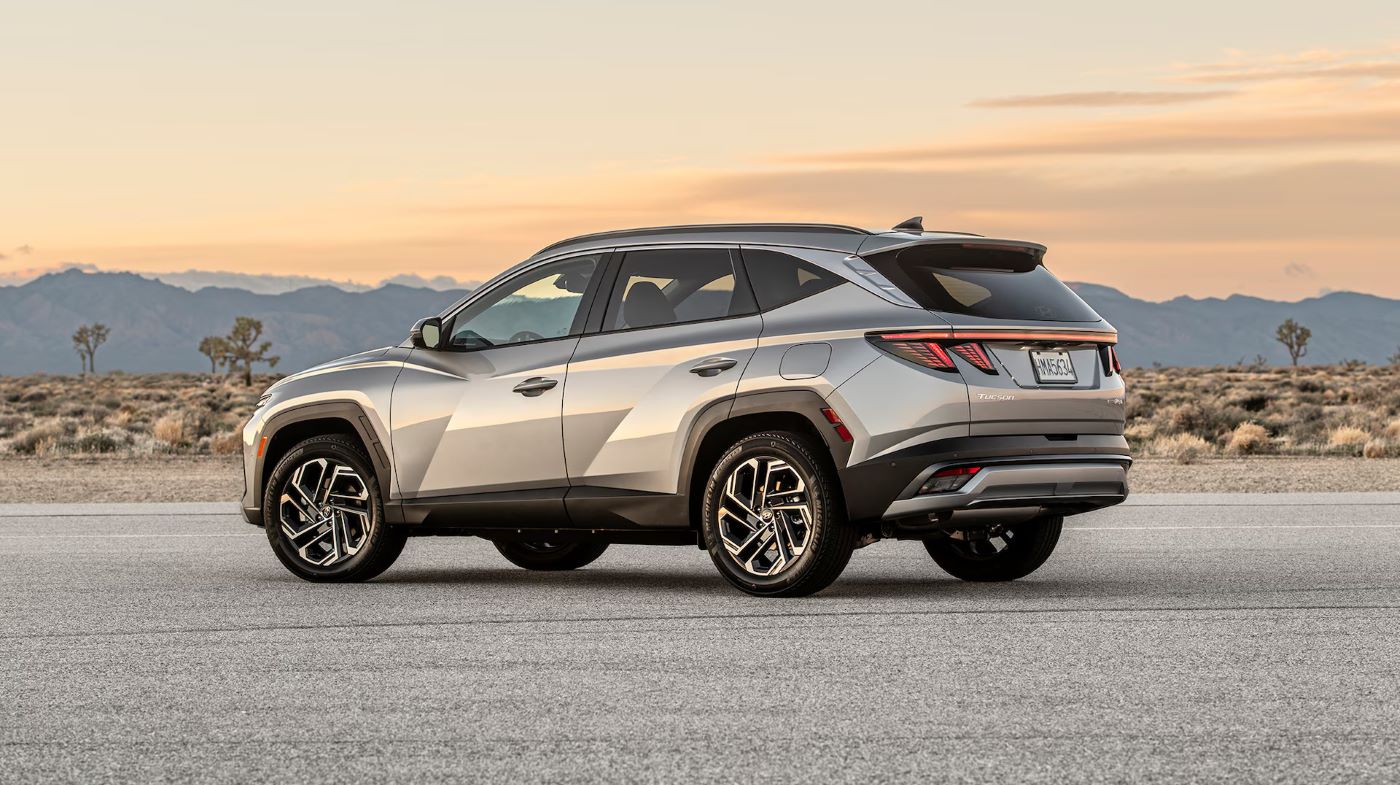
5. Hyundai Tucson Hybrid
Hyundai’s Tucson Hybrid combines a turbocharged engine with an electric motor, but unlike many turbo hybrids, it holds up well in the long term. It delivers about 37-38 MPG combined and retains those figures surprisingly well over time.
Hyundai’s advancements in thermal engine management and battery life contribute to this consistency, making it a practical choice for long-haul efficiency. The Tucson Hybrid features a 6-speed automatic transmission, which appeals to drivers wary of CVTs and their sometimes unpredictable fuel impacts.
Hyundai has also equipped the vehicle with regenerative braking and an efficient AWD system that doesn’t penalize you heavily at the pump. All of these work together to ensure long-term stability in fuel consumption.
Customer reviews and reliability data suggest the Tucson Hybrid doesn’t fall off the MPG cliff after 50,000 miles like some competitors.
Instead, with proper maintenance, it continues to perform admirably in both urban and highway settings. For buyers who want a modern-looking SUV with excellent long-term fuel savings, this one checks many boxes.
5 SUVs That Become Gas Hogs Over Time
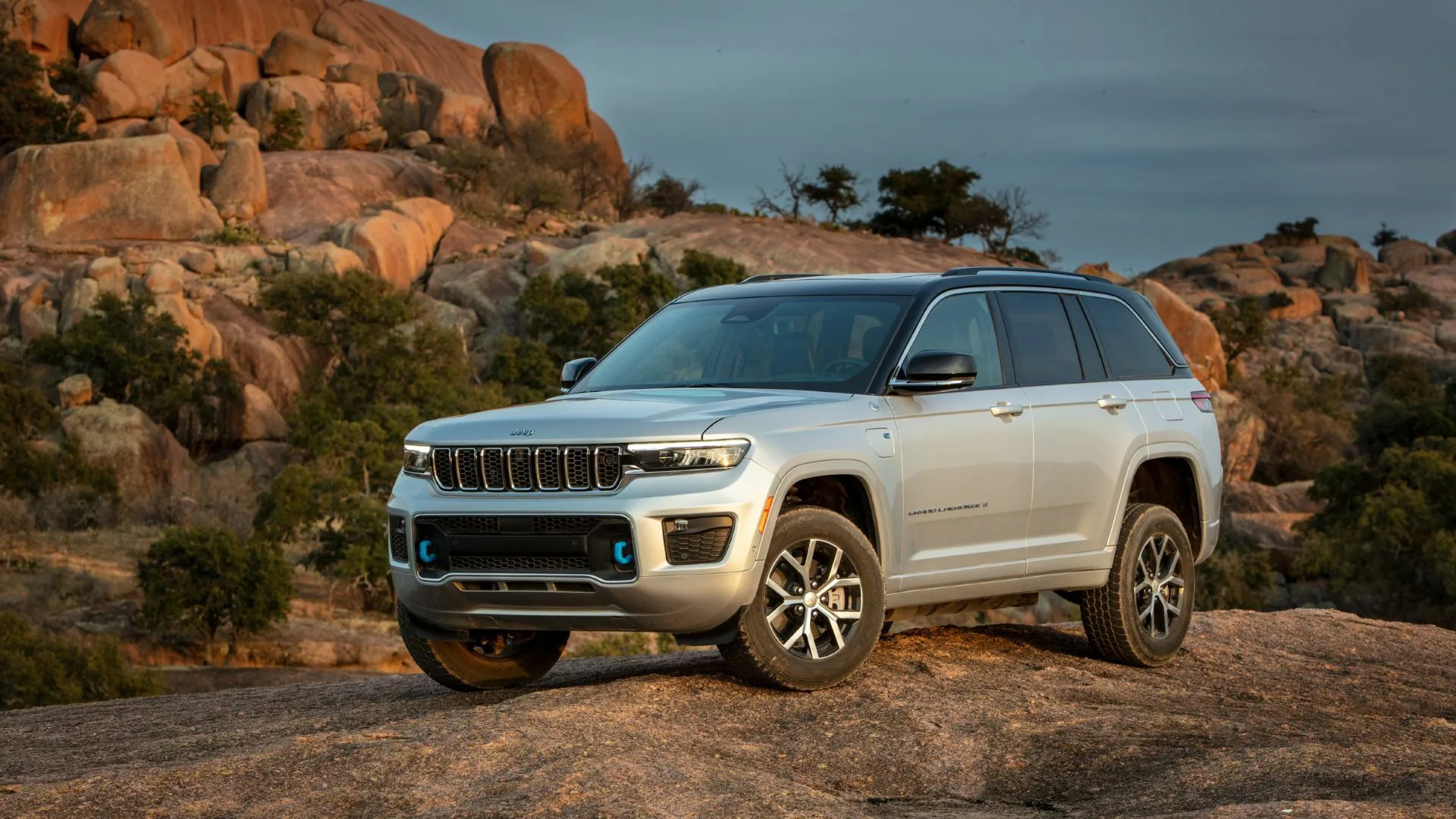
1. Jeep Grand Cherokee (Gas Models)
The Jeep Grand Cherokee has long been a favorite for those who appreciate rugged capability and a more premium interior in a midsize SUV. But despite its off-road prowess and stylish appeal, it has a well-documented tendency to become a gas hog over time.
Even though newer models claim improved efficiency, older gas-powered variants—especially those with the V6 or V8 engines—often start around 17–20 MPG and can easily dip into the low teens after several years of use.
One of the key factors contributing to this fuel inefficiency is the vehicle’s weight. Designed for serious off-road use and luxury comfort, the Grand Cherokee is heavy, and that weight naturally puts more strain on the engine.
As the engine and transmission age, they require more energy to move the same mass, leading to steadily declining fuel economy. Additional strain from oversized wheels and tires—often added aftermarket—only worsens the situation.
Maintenance plays a huge role in how quickly the fuel economy deteriorates. Many owners of older Grand Cherokees report frequent issues with oxygen sensors, throttle bodies, and exhaust systems.
When these parts start to fail, the engine burns more fuel than necessary just to maintain regular performance. On top of that, 4WD components that aren’t regularly serviced add rotational drag, further increasing fuel use.
The electronic systems designed to regulate engine performance can also become less effective over time. The ECU (engine control unit) may struggle to adjust fuel-air mixtures accurately as sensors degrade.
These calibration issues, while not always triggering a check engine light, can lead to significant real-world MPG drops. Software updates and diagnostics can help, but most owners don’t stay on top of these subtle problems.
The Grand Cherokee is a solid performer in many respects, but if long-term fuel efficiency is a priority, it’s hard to recommend. While it excels in comfort, style, and trail capability, its performance in the MPG department steadily declines, often making it a burdensome vehicle for daily commuters or long-distance drivers over time.
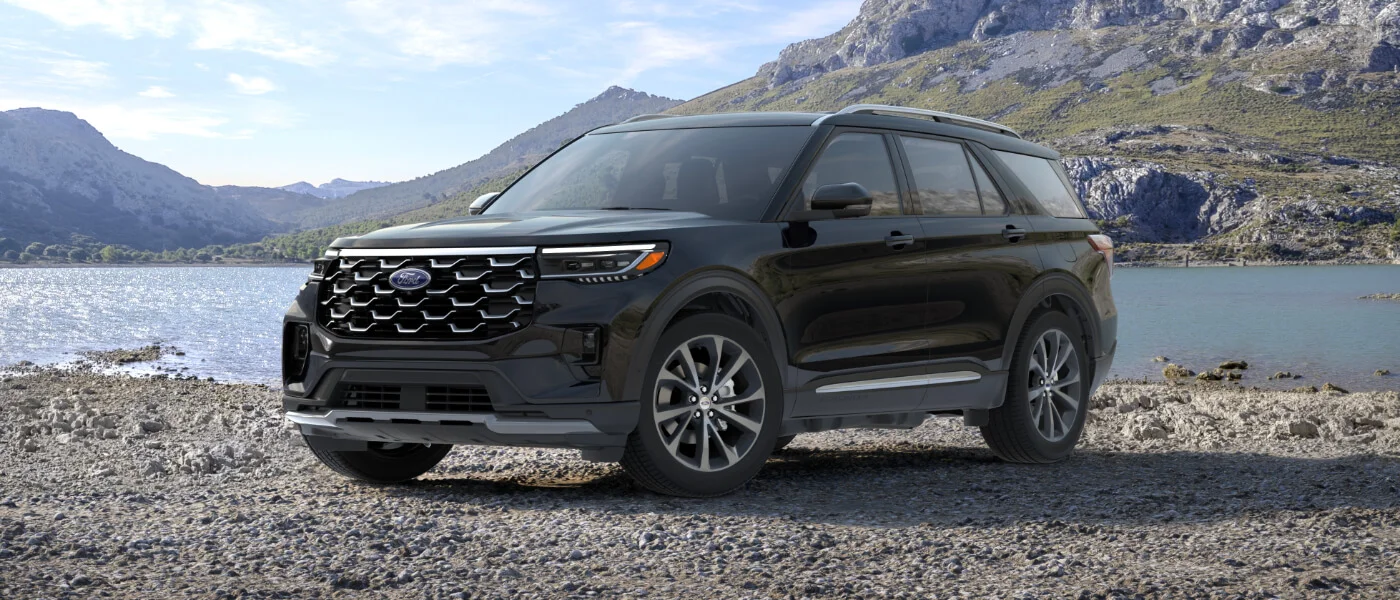
2. Ford Explorer (Older Generations)
The Ford Explorer has undergone many changes throughout its long history, and while recent models have shown improvements in fuel efficiency, older generations, especially those built between 2006 and 2016, are notorious for poor long-term MPG retention.
Initially advertised with acceptable figures in the 18–22 MPG range, these SUVs frequently fall short in real-world driving as they age. One of the Explorer’s biggest fuel economy pitfalls lies in its aging V6 engines and their compatibility with early automatic transmissions.
The powertrains were reliable but not optimized for fuel conservation, particularly when mated to heavy frames and underpowered gearboxes. As the transmission and torque converters wear out, shifts become sluggish and inefficient, which directly impacts MPG.
The Explorer’s suspension and chassis components also contribute to fuel inefficiency over time. When shocks, bushings, or alignment go unchecked, rolling resistance increases, and the engine must work harder to maintain speed. Many owners also report degraded wheel bearings and sticky brakes as culprits that slowly eat away at gas mileage, issues that can easily go unnoticed for years.
Poor aerodynamics in older designs adds to the burden. With their boxy frames and upright stance, these SUVs push more air at highway speeds, leading to higher fuel consumption.
As weatherstripping, seals, and underbody panels degrade, wind resistance increases. Unlike newer Explorers that have incorporated wind-tunnel-tested shapes and lightweight materials, the older versions were not built with fuel economy as a top priority.
While loyal Ford owners often keep their Explorers for the long haul, the cost comes with diminishing fuel returns. Unless you’re proactively addressing every mechanical issue and replacing parts at manufacturer-recommended intervals, it’s difficult to maintain even the original MPG figures. For drivers looking to keep operational costs down over time, older Explorers are a risky bet.
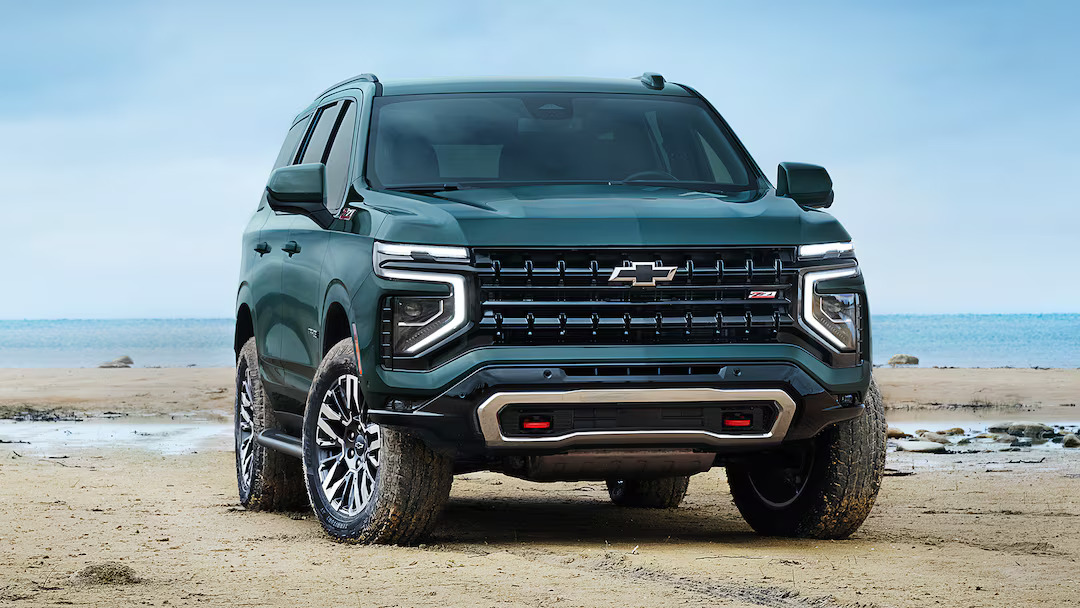
3. Chevrolet Tahoe
The Chevrolet Tahoe has always been a commanding presence on the road, prized for its spacious interior, high towing capacity, and strong V8 power. But one of its most consistent criticisms—especially among long-term owners—is its rapidly declining fuel economy.
Even newer Tahoes rated around 16–20 MPG often fall below 14 MPG after a few years, with older models dipping into the single digits under certain conditions.
The core issue lies in the big-displacement engines that power the Tahoe. While these engines offer reliable torque and durability, they are not engineered with long-term fuel efficiency in mind.
The cylinder deactivation systems, which allow the engine to run on fewer cylinders under light load, are effective at first but often become unreliable over time. When these systems fail or stop engaging, the engine operates at full power constantly, burning through fuel rapidly.
Weight is another major factor. With curb weights exceeding 5,500 pounds in many trims, the Tahoe’s mass means more rolling resistance and energy required to accelerate and stop.
Add in the common use of large off-road tires or towing trailers, and you’re putting a tremendous load on the powertrain, which translates to significantly worse MPG over time. Even routine commutes can feel like towing a small camper in terms of fuel use.
Highway driving, where many large SUVs perform better due to consistent speeds, doesn’t redeem the Tahoe’s long-term MPG either. Aging gearboxes, worn driveshafts, and degraded differential fluids all create extra drag and reduce efficiency.
Many owners also note that as the suspension softens and ride height drops slightly with age, aerodynamic drag increases, further contributing to fuel inefficiency. While the Tahoe continues to be an excellent SUV for specific roles—towing, family road trips, fleet use—it is one of the most challenging to justify from a fuel-saving standpoint.
Unless you’re moving heavy cargo regularly or absolutely need the passenger space, long-term ownership will likely involve more trips to the gas station and higher operating costs compared to similarly sized crossovers or newer hybrid options.
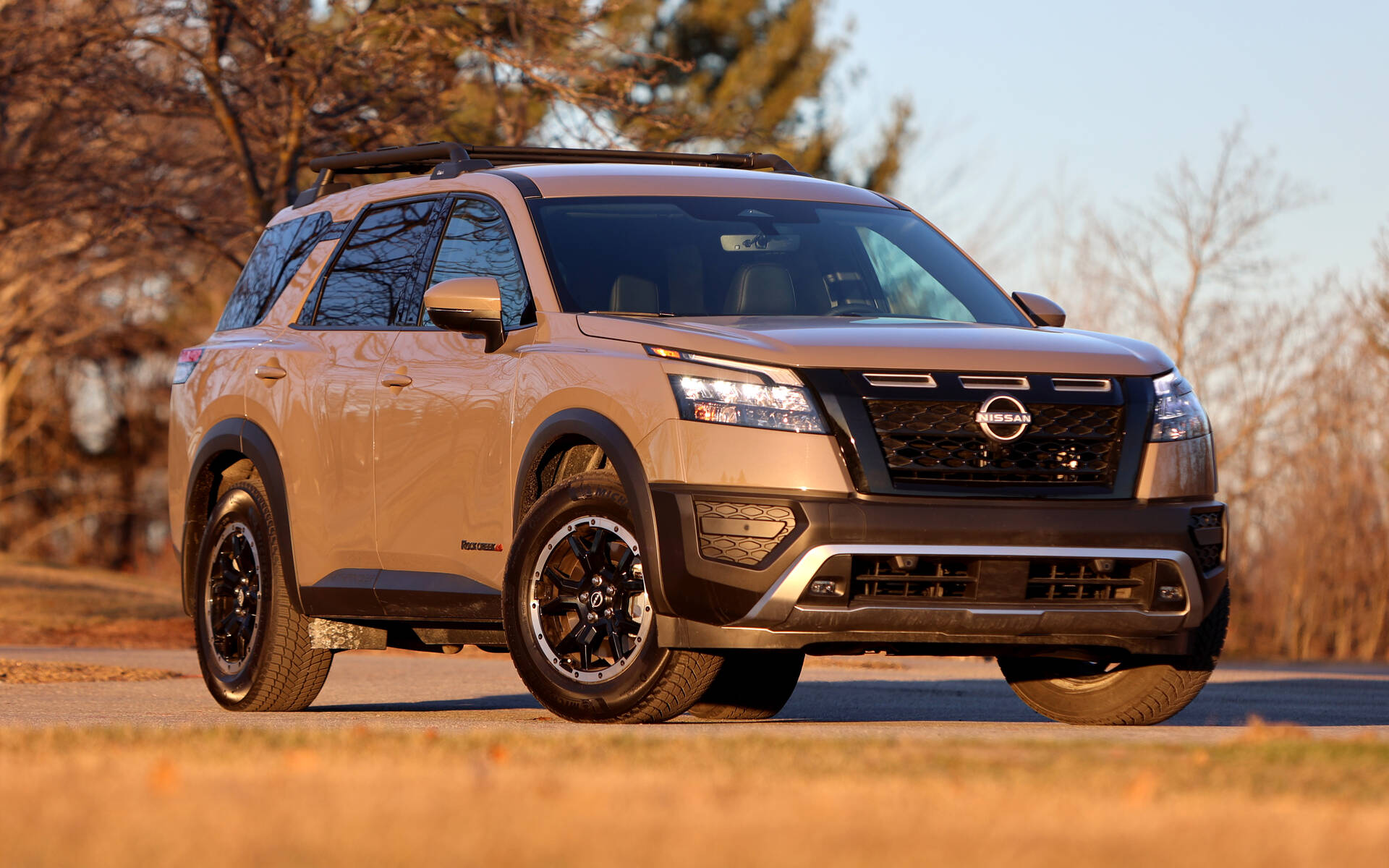
4. Nissan Pathfinder (Pre-2022 Models)
Before its 2022 redesign, the Nissan Pathfinder had a rocky history in terms of balancing power and efficiency. While newer versions have improved in many areas, models from 2013 to 2020—particularly those using the 3.5L V6 with a CVT—suffer from severe fuel economy drops over time. Initially capable of reaching about 20–23 MPG, many owners report seeing numbers closer to 15 MPG or less within just a few years.
The CVT (continuously variable transmission) is a central reason for this decline. In theory, it should help optimize RPM for fuel savings, but in practice, early Nissan CVTs often degraded rapidly, becoming noisy, inefficient, and prone to slipping.
When the transmission struggles to find or maintain the right gear ratio, the engine compensates by revving higher, which consumes more fuel and wears out components faster.
Another problem is thermal degradation. The Pathfinder’s drivetrain is known to overheat under load, especially when towing or driving in hot climates. Once the cooling system becomes less effective or the CVT fluid isn’t regularly replaced, efficiency takes a serious hit.
These issues not only lead to higher gas usage but also increased maintenance costs and reduced lifespan of critical components. Interior and cargo space in older Pathfinders made them popular for family use, but this often resulted in overloading, which further taxed the powertrain.
Combined with AWD systems that are always engaged or difficult to disengage, the engine frequently operates under high load. Many owners who use the SUV for camping, hauling gear, or long highway trips report that MPG rarely meets the EPA estimates, even when new.
Nissan made strides with the redesigned 2022 Pathfinder, ditching the CVT and improving aerodynamics, but for those considering a used model from the previous decade, fuel efficiency is a major drawback. Unless meticulously maintained and driven gently, the older Pathfinders often turn into frustratingly inefficient daily drivers.
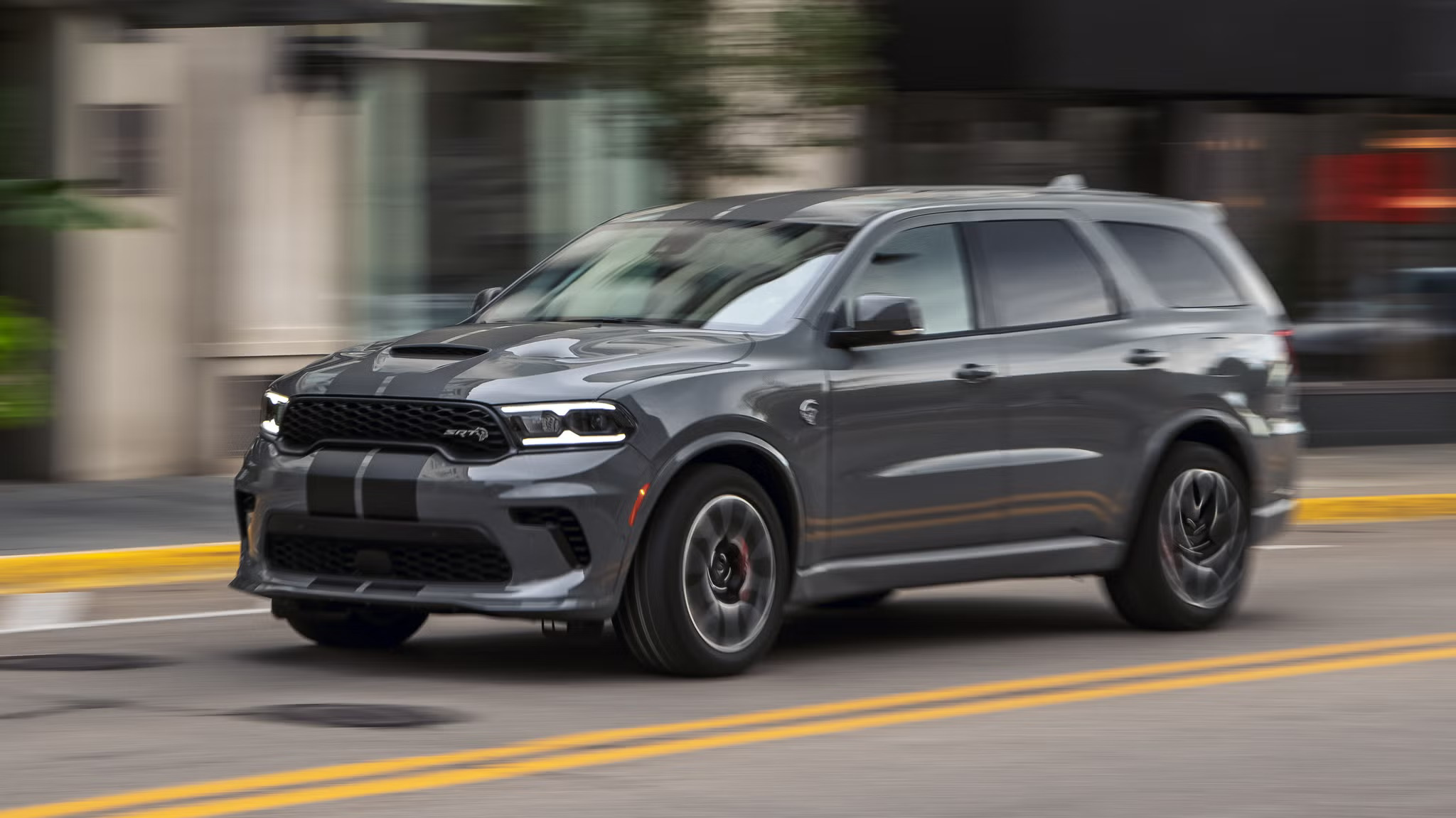
5. Dodge Durango
The Dodge Durango is an SUV with muscle car DNA, especially in its higher trims equipped with the 5.7L HEMI V8 or the 6.4L SRT variant. While undeniably powerful and fun to drive, the Durango does not age gracefully when it comes to fuel consumption. Even the V6 versions struggle to maintain efficiency over time, and owners frequently report MPG numbers far below the advertised 18–22 combined rating.
The problem begins with how the Durango is designed: it’s heavy, rear-wheel-drive-based, and geared for performance. This setup is excellent for towing and acceleration, but comes at the cost of fuel economy. As the powertrain ages, the aggressive tuning becomes a liability.
The HEMI engine’s cylinder deactivation system, while theoretically fuel-saving, often becomes inconsistent with age or ceases functioning altogether, returning the SUV to full V8 mode almost permanently.
Aggressive driving also plays a role. The Durango invites a sporty driving style, which naturally burns more fuel. Over time, these habits, combined with engine wear, lead to lower compression and inefficient combustion.
Even for conservative drivers, the Durango’s weight and drivetrain configuration mean that aging components like differentials and driveshafts begin to sap energy and raise fuel consumption.
From a maintenance standpoint, the Durango is not the easiest vehicle to keep efficient. Oil consumption increases with age, and many owners neglect critical services like throttle body cleaning or ECU recalibration.
Add in the often-overlooked impact of aging fuel injectors and carbon buildup in the intake valves, and it’s clear why so many Durangos struggle to stay fuel-efficient beyond 60,000 miles.
In the end, the Durango is a performance-oriented SUV that was never meant to lead the class in MPG, but over time, its thirst for fuel grows substantially.
While it excels in towing, acceleration, and bold aesthetics, drivers hoping to balance those perks with long-term fuel savings are likely to be disappointed. It’s a great SUV for weekend warriors, but a costly commuter as it ages.
Also Read: 10 Best Hybrid Cars of 2025 That Balance Fuel Efficiency, Reliability, and Everyday Comfort
When it comes to SUVs, fuel efficiency isn’t just about what’s promised on the sticker—it’s about what the vehicle delivers years and thousands of miles later.
The distinction between SUVs that retain high MPG over time and those that gradually devolve into gas guzzlers can significantly impact ownership satisfaction, long-term operating costs, and environmental footprint.
As this article has shown, factors such as engine design, drivetrain efficiency, weight, and even the type of transmission play pivotal roles in how an SUV performs as it ages.
SUVs like the Toyota RAV4 Hybrid, Honda CR-V Hybrid, and Mazda CX-5 prove that thoughtful engineering and a focus on balance can result in consistent fuel economy across a vehicle’s lifespan. These models are well-suited for drivers who prioritize practicality, reliability, and lower running costs.
On the other hand, larger, more power-focused SUVs like the Chevrolet Tahoe, Jeep Grand Cherokee, and Dodge Durango cater to a different set of needs—towing, performance, and size—but often do so at the expense of long-term fuel efficiency. While these vehicles may shine in specific use cases, they require more attention and costlier upkeep to avoid becoming fuel-hungry burdens.
Ultimately, buyers need to consider more than just initial MPG figures when choosing an SUV. If you plan to keep your vehicle beyond the typical lease or warranty period, it’s worth digging into how that model behaves with age, how its powertrain holds up, and what kind of maintenance it demands.
By doing so, you can avoid costly surprises down the road and invest in a vehicle that delivers consistent performance, not just in its early years, but for the entire journey ahead.

